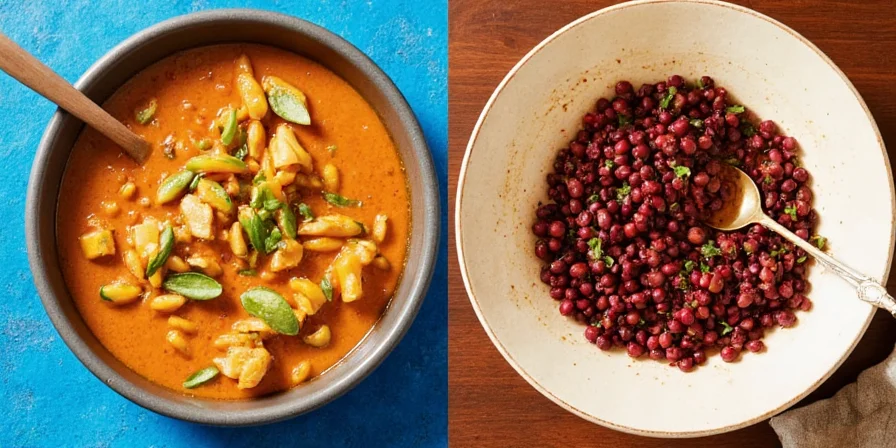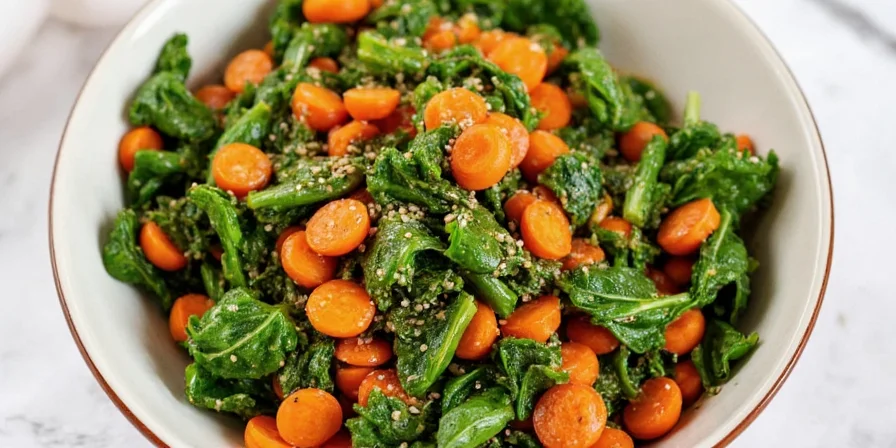What is Haitian Legume? The Authentic Answer You Need
Haitian Legume (pronounced lay-goom) is Haiti's national vegetable stew, not just another soup. This cultural cornerstone combines fresh vegetables, protein, and the essential Haitian seasoning base called epis in a single pot. Unlike generic vegetable stews, authentic Legume features specific techniques like spice layering and slow simmering that create its distinctive flavor profile.
When searching for 'Haitian Legume recipe,' you're likely looking for the genuine article—not an approximation. This guide delivers the authentic preparation method used in Haitian kitchens for generations, with precise spice techniques that make the difference between ordinary and extraordinary.
Authentic Haitian Legume Recipe (Traditional Method)
This is the complete recipe you've been searching for, using time-honored techniques that preserve the dish's cultural integrity while working in modern kitchens.
| Prep Time | Cook Time | Servings | Difficulty |
|---|---|---|---|
| 20 minutes | 60 minutes | 6 servings | Intermediate |

Essential Ingredients for Genuine Haitian Legume
| Ingredient | Authentic Quantity | Cultural Significance |
|---|---|---|
| Epis (Haitian seasoning base) | 1/4 cup | The flavor foundation - must contain culantro, not just parsley |
| Fresh thyme | 2-3 whole sprigs | Never substitute dried thyme - stems impart distinctive flavor |
| Beef (or goat) | 1.5 lbs, cubed | Traditional protein - bone-in adds richness |
| Vegetable medley | 4 cups total | Must include cabbage, carrots, chayote, and plantains |
| Scotch bonnet pepper | 1 whole, pierced | Provides authentic heat without overwhelming - never chopped |
Step-by-Step Traditional Preparation
- Prepare epis properly: Authentic epis must contain equal parts culantro and parsley (not substituted with cilantro), Scotch bonnet peppers, garlic, and vinegar. Make fresh or ensure store-bought contains these elements.
- Sear the meat: In a heavy pot, brown beef on all sides over medium heat. This Maillard reaction creates flavor compounds essential to authentic Legume.
- Add the flavor base: Stir in 1/4 cup epis and cook for 2 minutes until fragrant, allowing the oil to absorb the spices.
- Build the broth: Add 6 cups water, 2 thyme sprigs, and pierced Scotch bonnet. Bring to gentle boil then reduce to simmer.
- Layer vegetables strategically: Add harder vegetables first (carrots, chayote), then softer ones (cabbage, plantains) 20 minutes later to prevent mushiness.
- Simmer with patience: Cook uncovered for 45-60 minutes, never stirring vigorously. Authentic Legume develops flavor through slow infusion, not agitation.
- Final seasoning: Remove thyme stems and Scotch bonnet before serving. Adjust salt but avoid additional spices at this stage.
What is Epis? The Heart of Haitian Legume
Epis (pronounced 'eh-pee') isn't just a seasoning—it's the soul of authentic Haitian cooking. This vibrant green marinade contains specific proportions of:
- Culantro (not cilantro) - provides earthier flavor
- Parsley - for brightness
- Garlic - always fresh, never powdered
- Scotch bonnet peppers - for distinctive heat
- Vinegar or citrus juice - for preservation and acidity

Most store-bought versions substitute cilantro for culantro, creating a fundamentally different flavor profile. For genuine Legume, use authentic epis with culantro as the primary herb.
Proper Spice Storage for Authentic Haitian Flavors
Maintaining spice potency is critical for authentic Legume. Haitian cooks protect their spices from degradation using these traditional methods:
| Storage Method | Traditional Haitian Practice | Impact on Legume Flavor |
|---|---|---|
| Clear containers | Avoided - light degrades spices | Causes flat, one-dimensional flavor |
| Opaque containers in cool, dark place | Standard practice in Haitian kitchens | Preserves complex flavor compounds for authentic taste |

Replace spices annually for authentic Legume preparation. Ground spices lose 40% of flavor compounds within 6 months when improperly stored.
Traditional Spice Toasting Technique for Legume
Haitian cooks use dry toasting in calderos (cast-iron pots) to activate spice oils without burning:
- Use completely dry cast-iron or heavy-bottomed pot (no oil)
- Heat on medium-low for 60-90 seconds
- Constantly stir with wooden spoon until fragrant
- Immediately add liquid or other ingredients to stop cooking

This technique differs from generic "toasting spices" advice by using specific heat levels and timing critical to Haitian flavor development.
The Authentic Vegetable Sequence for Haitian Legume
Adding vegetables at precise times creates perfect texture in authentic Legume:
| Vegetable Type | Add Time | Traditional Reason |
|---|---|---|
| Carrots, chayote, turnips | With meat broth | Require longest cooking to become tender without disintegrating |
| Cabbage, green beans | 25 minutes into simmer | Maintain texture while absorbing flavors |
| Plantains, yuca | 15 minutes before serving | Prevent overcooking while allowing flavor absorption |
Never add all vegetables at once - this common mistake creates mushy, indistinct Legume.
Traditional Meat Preparation for Authentic Legume
The protein choice significantly impacts authentic Legume:
- Beef: Use chuck roast with some fat marbling - lean cuts dry out during long cooking
- Goat: Traditional in rural Haiti - requires longer cooking but yields distinctive flavor
- Chicken: Only use bone-in, skin-on thighs for sufficient collagen
Always brown meat thoroughly before adding liquid. This Maillard reaction creates flavor compounds essential to authentic Legume that can't be replicated with shortcuts.
5 Authenticity-Breaking Mistakes in Haitian Legume (and How to Avoid Them)
- Mistake: Using cilantro instead of culantro in epis
Solution: Find culantro at Caribbean markets or grow your own - it's essential for authentic flavor - Mistake: Adding all vegetables at once
Solution: Follow the traditional vegetable sequence based on cooking time requirements - Mistake: Stirring vigorously during simmering
Solution: Gently swirl the pot instead - authentic Legume develops flavor through slow infusion - Mistake: Using dried thyme instead of whole sprigs
Solution: Always use fresh thyme sprigs - stems impart distinctive flavor that dried thyme lacks - Mistake: Adding hot peppers chopped rather than whole and pierced
Solution: Use whole Scotch bonnet pierced with cloves for controlled heat infusion
Authentic Vegetarian Haitian Legume (Traditional Adaptation)
While meat-based Legume is traditional, Haitian cooks have long prepared vegetarian versions for religious observances:
- Use smoked turkey necks as flavor base (removed before serving)
- Substitute with mushroom broth made from dried porcini
- Add peanut butter (1 tbsp) for authentic richness without meat
- Include breadfruit for traditional texture and substance
The key difference from generic vegetarian stews is maintaining the epis foundation and traditional vegetable sequence.
How to Serve Haitian Legume Authentically
Authentic presentation matters as much as preparation:
- Serve in wide, shallow bowls to showcase the vegetables
- Always accompany with white rice (never bread)
- Include pikliz (spicy Haitian slaw) on the side
- Never garnish with additional herbs - authentic Legume stands complete
This contrasts with common restaurant versions that add unnecessary garnishes that distract from the dish's natural beauty.
Frequently Asked Questions About Authentic Haitian Legume
What makes Haitian Legume different from other vegetable stews?
Authentic Legume is distinguished by its specific vegetable combination (must include cabbage, carrots, chayote, and plantains), the essential epis seasoning base with culantro, and the traditional cooking method where vegetables are added sequentially rather than all at once. Unlike generic stews, authentic Legume has a clear broth (not thickened) with distinct vegetable textures.
Can I make authentic Haitian Legume without epis?
True authentic Legume requires epis as the flavor foundation. If you can't find authentic epis containing culantro, the closest substitute is making your own with 1/4 cup fresh culantro, 1/4 cup parsley, 2 garlic cloves, 1 Scotch bonnet pepper, and 2 tbsp vinegar processed to a paste. Generic seasoning blends won't replicate authentic flavor.
Why is my Legume broth cloudy?
Cloudiness indicates improper technique. Authentic Legume has a clear broth achieved by: 1) Not stirring vigorously during simmering, 2) Adding potatoes later in cooking to prevent starch release, 3) Using the traditional sequence of adding vegetables. If cloudiness occurs, clarify by adding a cornstarch slurry (1 tsp cornstarch + 2 tbsp cold water) while gently swirling the pot.
How long should Haitian Legume simmer for authentic results?
Authentic Legume requires 45-60 minutes of gentle simmering after the meat has browned. The precise time depends on meat tenderness and vegetable selection. The stew is done when the meat is fork-tender but not falling apart, and vegetables maintain their shape while being fully cooked. Rushing this process creates inauthentic flavor development.










 浙公网安备
33010002000092号
浙公网安备
33010002000092号 浙B2-20120091-4
浙B2-20120091-4